“We do not learn from experience; we learn from reflection on experience.”
John Dewey
Overview
In a day you might have millions of good and bad experiences, for example, you had a good dream that made you feel good the next morning or you accidentally added salt instead of sugar to your morning coffee. Some experiences are bigger than that, like when you were supposed to send a report today, but mistakenly you sent the wrong one and now your supervisor is mad. Among all experiences of a day, you often look back and reflect on where things went wrong and how damage control can be done in some of your experiences. This means that you reflect upon your experience to get a broader picture of why things did or did not go well. This is exactly how reflection works, a model of reflection is a structured process that is used to guide personal and situational analysis and improvement. It provides you with an overview of how things went, and how you can identify areas for improvement to make sure you don’t repeat the same problems. This is further substantiated by a research study done by Giada Di Stefano, Francesca Gino, Gary Pisano, and Bradley Staats in which they surveyed a call centerr to illustrate that employees who spend 15 minutes on reflecting about the lesson learned at the end of the day, performed 23% better after 10 days as compared to those who did not.
Table of Contents
- Overview
- List of different reflection models
- Kolb reflective cycle
- Gibbs' reflective cycle
- ERA cycle
- Integrated reflective cycle
- Four Fs of active reviewing
- CARL Framework
- Roper Logan and Tierney’s reflection model
- 5R Framework
- REFLECT Model Box 1
- Atkins and Murphy's model
- Driscoll's model of reflection
- Rolfe et al’s framework for reflective learning
- Brookfield model
- Johns' model of reflection
- Borton's model of reflection
- Schön's model of reflection
To continue, as the term implies, reflection is looking into oneself and describing what you see. To put it in simple language, reflection is to think about something and identify areas for improvement. To define, reflection refers to a process of examining ourselves, our perspectives, and our experiences to help us gain insight into our actions and see how to move forward. This can also be defined as a way to assess ourselves, see ways of working and determine our future actions (Libguides, 2021).
But, do you know that self-reflecting or teamwork reflection is becoming an important source of learning in various professions including software development teams, where continuous improvement enhances code quality, collaboration, and delivery cycles? If yes, you are going the right way. There are several models of reflection that are used by various business professionals, students, teachers, nursing staff, etc. to reflect on their past experiences and can work on their self-improvement. A research study of students found that four out of five students recognized the importance of writing reflective journals towards understanding their potential for self-growth.
That being the case, this blog will effectively discuss different reflection models that can assist you in reflecting upon your experiences effectively. Alongside elucidated illustrations of models, detailed examples of the implementation of models are also provided with each model, offering insights relevant to areas such as Smart sheet consulting services.
List of different models through which you can reflect upon
1. Master Experiential Learning with Kolb’s Reflective Cycle
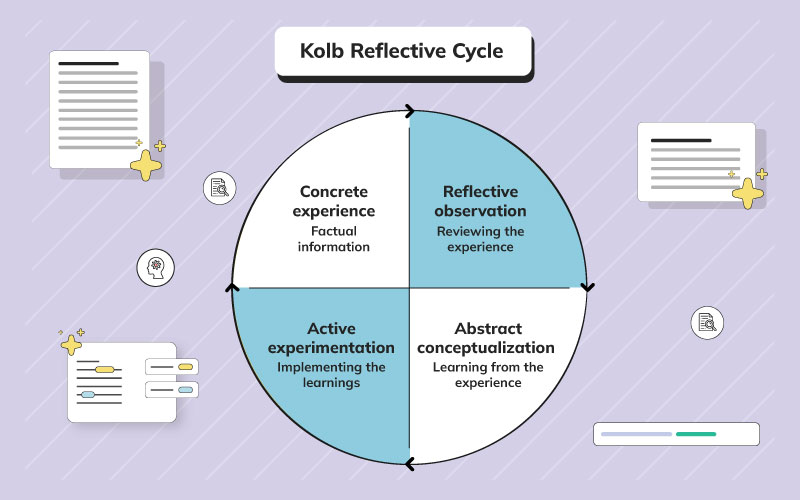
Kolb's reflective cycle in 1984 was given by David Kolb by focusing on the major 4 stages of learning through experience. This blog presents a well-researched illustration of the model along with an example of model implementation in nursing.
2. Learn From Your Past Experience with Gibb’s Reflective Cycle
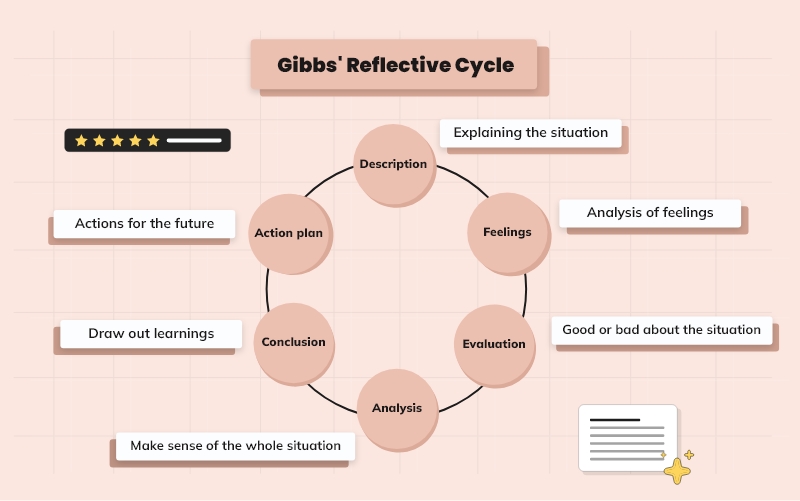
Gibbs' model of reflection was given by Graham Gibbs in 1998. This blog will meticulously present detailed information about the model and also provide an example of the implementation of Gibbs' Model in nursing practice.
3. Self-introspection and Improvement with ERA Reflective Cycle

This blog presents a meticulous description of the ERA cycle of reflection in which ERA stands for experience, reflection, and action. Alongside this, the blog also contains an example of the implementation of the model in nursing.
4. Understand your Reactions with Integrated Reflective Cycle
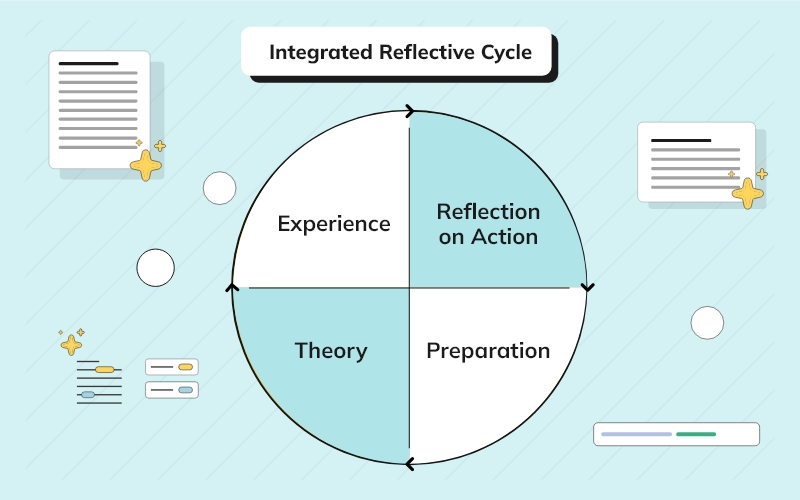
Integrated reflective cycle was developed by Bassot in 2013 that can assist you in precisely writing your reflective practice. This blog contains an elucidated description of the model along with an example of the implementation of the model in the nursing discipline.
5. Critically Examine Problems With Four Fs of Active Reviewing
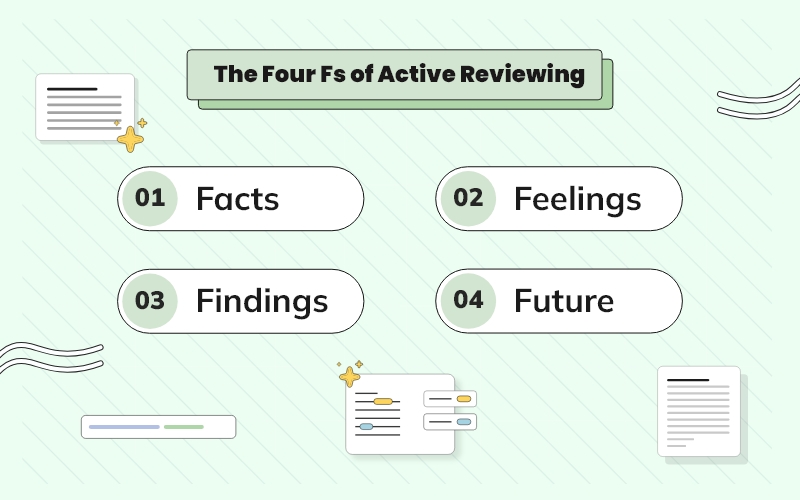
The model of the 4Fs of active reviewing was developed by Dr. Roger Greenaway and uses the 4 Fs for facts, feelings, findings, and future. This blog will effectively cover the explanation of the model with a detailed exemplification of the model in nursing.
6. Ace Your Interviews With The CARL Framework of Reflection
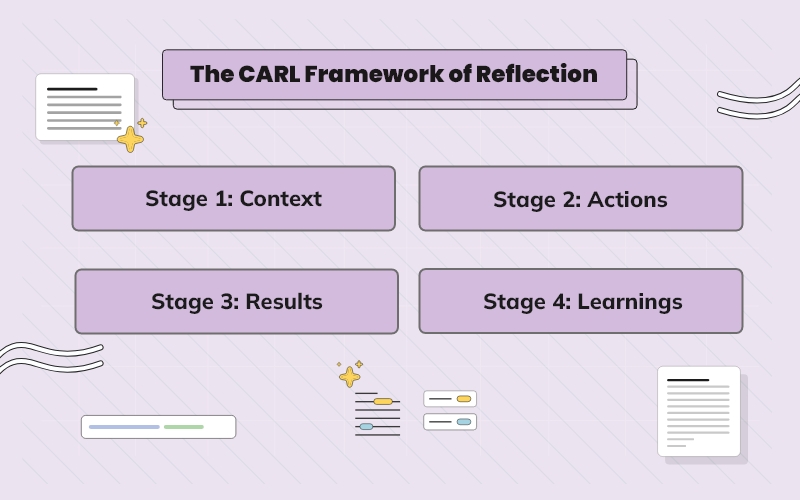
CARL stands for context, actions, results, and learnings and the CARL model is widely used in reflective writing. This blog will effectively cover the well-researched explanation of the model that will assist you in your reflective writing.
7. Nursing Care with Roper Logan and Tierney Model

The roper logan and Tierney's model got its name from its 3 authors Nancy Roper, Winifred W. Logan, and Alison J. Tierney in the year 1980. This blog covers a well-elucidated illustration of the blog along with an example of the implementation of the model in nursing and healthcare.
8. A Comprehensive Guide for 5R Framework of Reflection
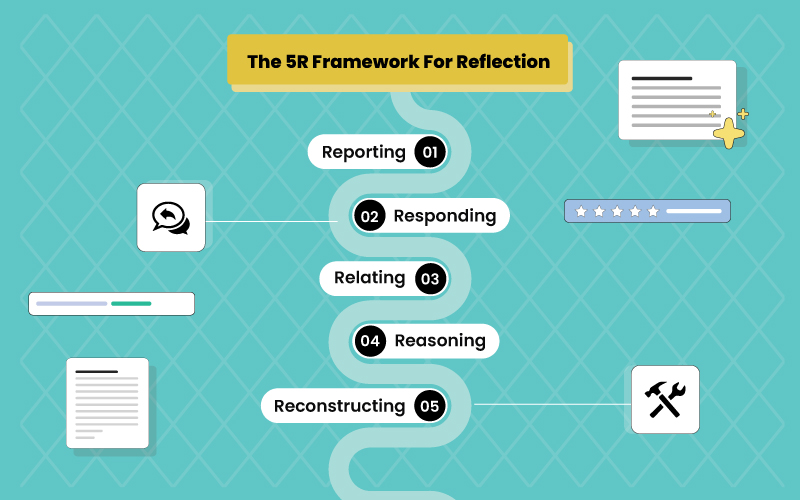
Developed in 2002, the 5R framework of reflection was brought to light by Bain et al. This blog will effectively present the explanation of the model along with an example of implementation of the model.
9. Understanding Self Reflection with REFLECT Model Box 1
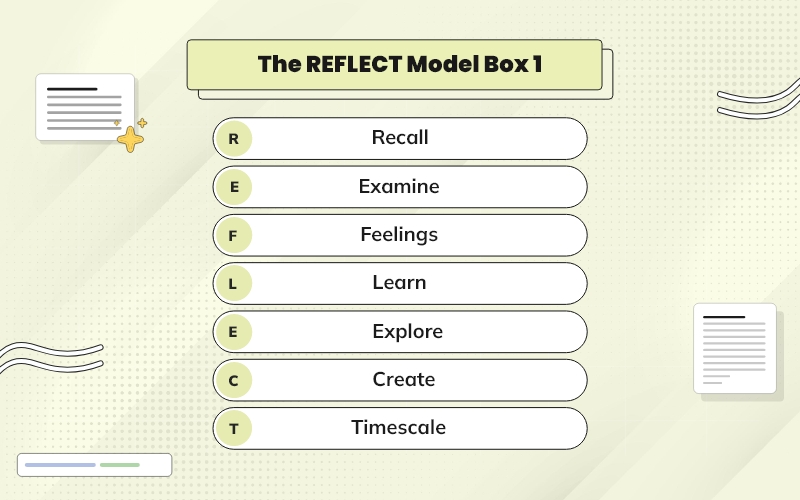
By dividing the model into 7 parts, Nick butcher and Andy Whysall created a REFLECT model box 1. This section will cover a well-researched description of the model and also provides a sample of reflective writing for better understanding.
10. Personal Growth with Atkins & Murphy’s Model of Reflection
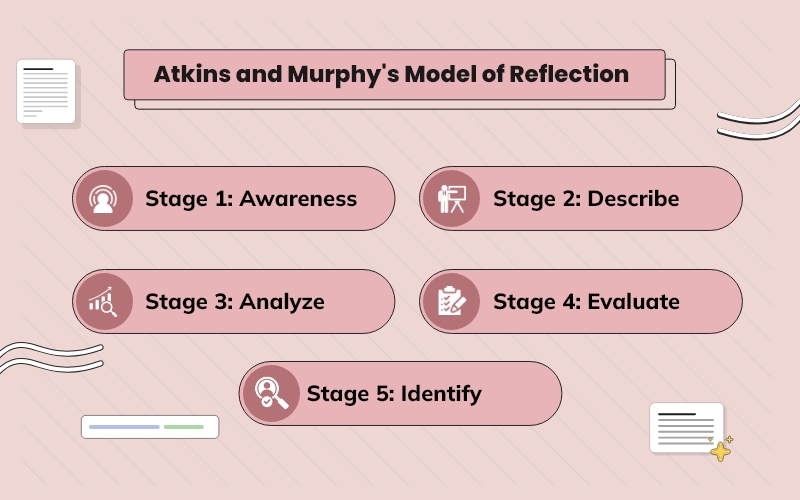
Sue Atkins & Kathy Murphy created a model of reflective practice in the year 1994. This article presents precisely detailed information about the model along with an example of the implementation of the model in nursing and healthcare centers.
11. Meticulous Explanation of Driscoll's Model of Reflection
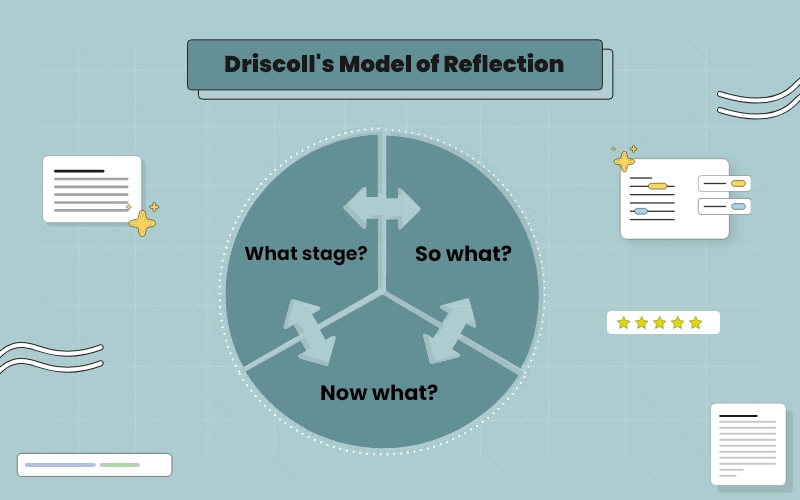
Driscoll’s model of reflection was given by Driscoll in the year 1994. In this model, you will learn about the effective implementation of the model along with an example of model implementation in nursing practice.
12. Rolfe et al’s Framework for Reflective Learning

Rolfe et al's Framework Reflection was given by Gary Rolfe in 2001 along with assistance from his colleagues. This blog provides a detailed explanation of the model along with the implementation.
13. All inclusive guide to Brookfield reflective model
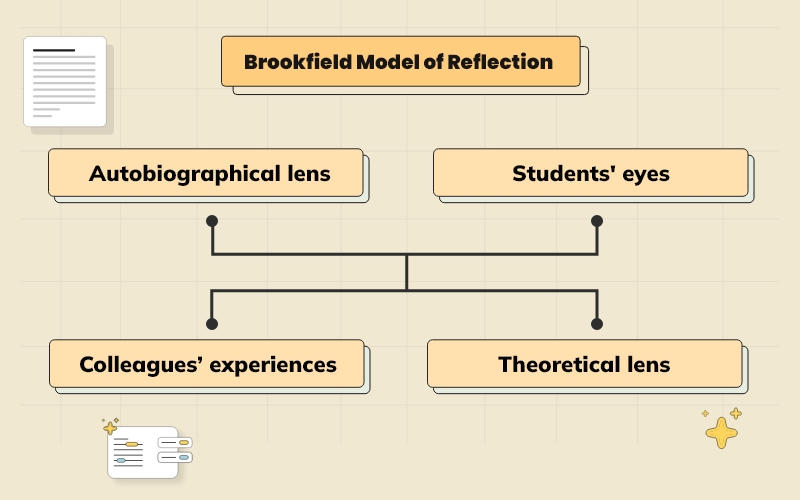
Brookfield’s framework for reflection was specifically created for teachers by Brookfield in 2005. This blog will present detailed information about the model along with a well-elaborated example of the implementation of the model.
14. Put Experience into Learning: Johns Model of Reflection
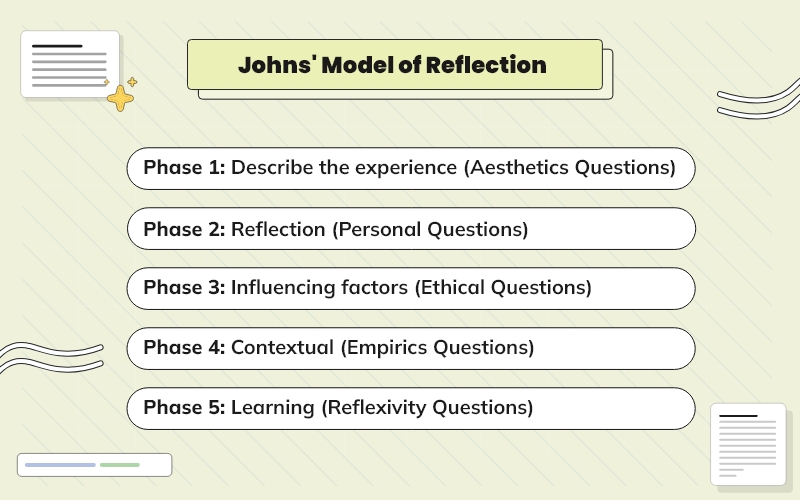
By highlighting the 5 phases of reflection, Christopher Johns developed the Johns Model. This blog will effectively confer detailed information about the model along with an effective example of the implementation of the model.
15. All-inclusive Guide to Borton's Reflective Model

Borton’s model was developed by Terry Borton who was working as a teacher and was based on Rolfe et al’s framework of reflection. This blog covers a detailed description of the model along with explaining the implementation of the model.
16. Master the Art of Reflection with Schön's Reflective Model
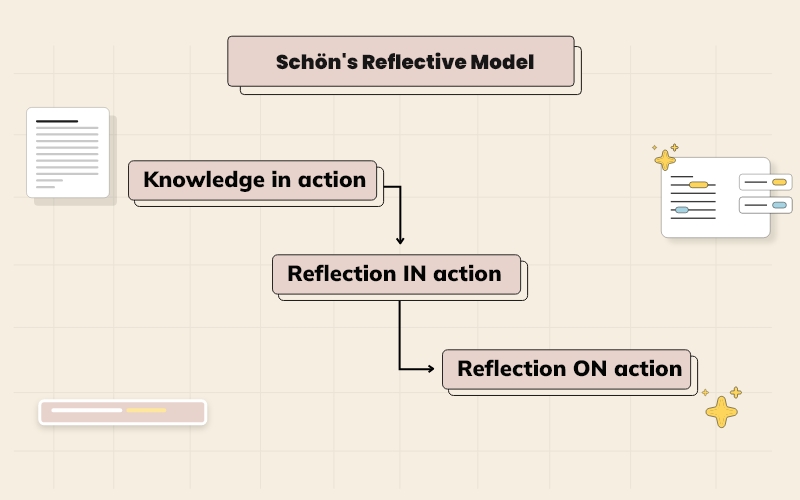
Schön's model of reflection came to light in 1991 and was developed by Donald Schön. This blog will encounter detailed information about the model along with its implementation in nursing practice.

 Proof Reading
Proof Reading  Copy Writing
Copy Writing  Resume Writing
Resume Writing  Blogs
Blogs Guides
Guides SOP's
SOP's Student Resources
Student Resources Research Topics
Research Topics Login
Login Register
Register